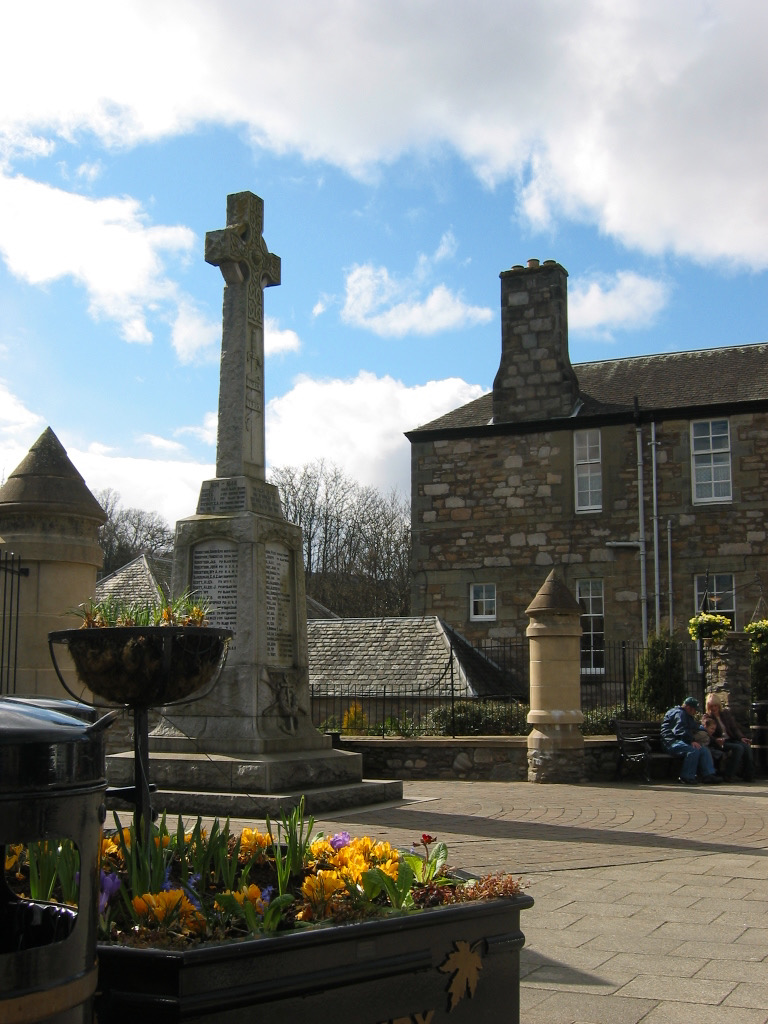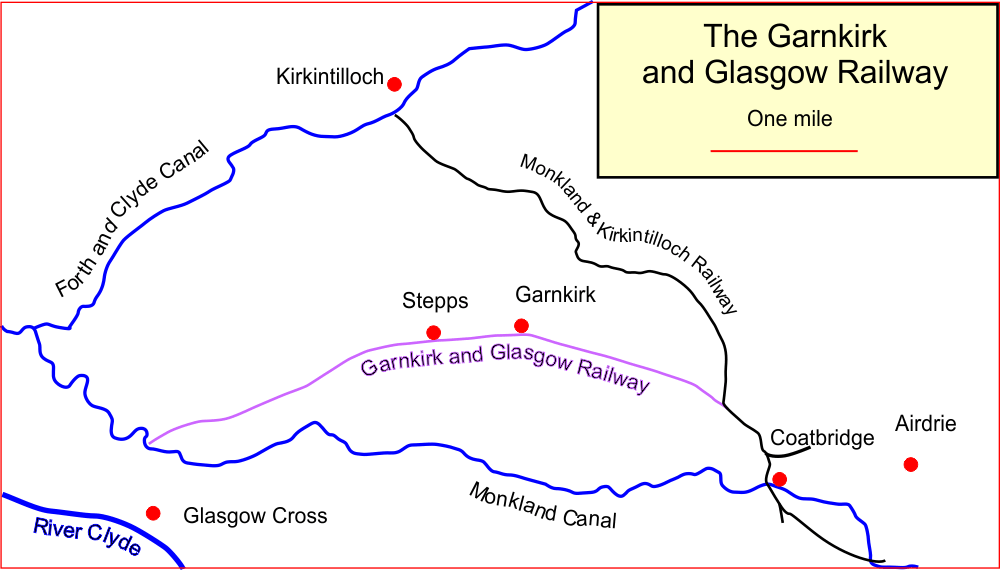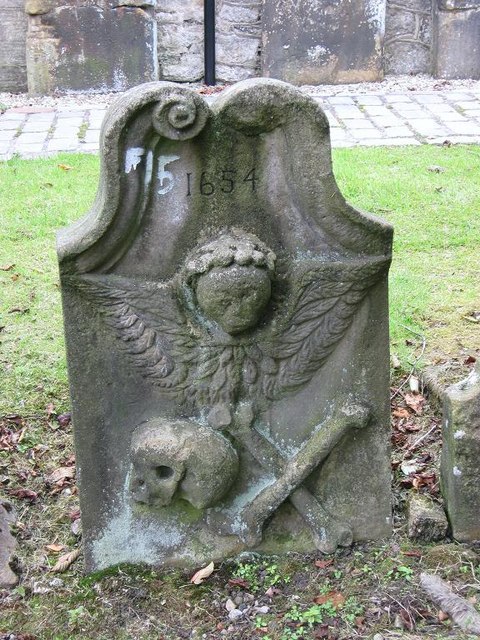|
Midland Scottish
Midland Scottish Omnibuses Ltd was a bus operating subsidiary of the Scottish Transport Group formed in June 1985 from part of W. Alexander & Sons (Midland) Ltd, and operated until 1991 when it was renamed Midland Bluebird Ltd. Operation From its head office in Camelon (later Larbert), Midland Scottish was the largest bus operator in Stirling, Clackmannanshire and Falkirk districts and was responsible for urban, rural and interurban services in and around Stirling, the Trossachs, Alloa, Falkirk, and Linlithgow, as well as parts of Argyllshire. Services from these places extended into Glasgow, Edinburgh and Perth. The company also provided coaches for Scottish Citylink express work, mainly north west and central Scotland to other towns and cities in Scotland and England. History Its predecessor company, W Alexander & Sons can be traced back to 1923, and had been split into three smaller companies in 1961. The largest of these, Midland, subsequently renamed Midland Scot ... [...More Info...] [...Related Items...] OR: [Wikipedia] [Google] [Baidu] |
Midland Scottish Bus PE453 (WFS 145W), SVBM, 18 August 2013
Midland may refer to: Places Australia * Midland, Western Australia Canada * Midland, Albert County, New Brunswick * Midland, Kings County, New Brunswick * Midland, Newfoundland and Labrador * Midland, Ontario India * Midland Ward, Kohima, Nagaland Ireland * Midland Region, Ireland United States * Midland, Arkansas * Midland, California * Midoil, California, formerly Midland * Midland, Georgia * Midland, Indiana * Midland, Kentucky * Midland, Louisiana * Midland, Maryland * Midland, Michigan * Midland, Missouri * Midland, North Carolina * Midlands of South Carolina * Midland, Ohio * Midland, Oregon * Midland, Pennsylvania * Midland, South Dakota * Midland, Tennessee * Midland, Texas * Midland, Virginia * Midland, Washington * Midland City, Alabama Railways * Buenos Aires Midland Railway, a former British-owned railway company in Argentina * Colorado Midland Railway, US * Florida Midland Railroad (other), US * Midland Railroad (Massachusetts), US * Midland Railway ... [...More Info...] [...Related Items...] OR: [Wikipedia] [Google] [Baidu] |
Highland Scottish
Highland Scottish Omnibuses Ltd was formed as a bus operating subsidiary of the Scottish Transport Group in June 1985 from Highland Omnibuses Ltd, and operated until October 1995 when the company was split into two - Highland Bus & Coach and Highland Country Buses. The companies have since remerged and operate today as Highland Country Buses. It is now Stagecoach in the Highlands. Background From its head office in Seafield Road, Inverness, Highland Scottish operated over the massive geographical, but sparsely populated, area of the Highland region of north west Scotland. Highland Scottish was the largest operator in north west Scotland and was responsible for urban, rural and interurban services in and around the towns of Inverness, Aviemore, Nairn, Tain, Portree, Wick, Thurso and Fort William, with depots located in these towns. Services extended to Oban in the south, and Highland also operated coaches on long distance Scottish Citylink work, linking Inverness an ... [...More Info...] [...Related Items...] OR: [Wikipedia] [Google] [Baidu] |
Pitlochry
Pitlochry (; gd, Baile Chloichridh or ) is a town in the Perth and Kinross council area of Scotland, lying on the River Tummel. It is historically in the county of Perthshire, and has a population of 2,776, according to the 2011 census.Scotland's 2011 census. (n.p.). Scotland's Census. Retrieved 24 November 2015, from http://www.scotlandscensus.gov.uk/ It is largely a Victorian town, which developed into a tourist resort after Queen Victoria and Prince Albert visited the area in 1842 and bought a highland estate at Balmoral, and the arrival of the railway in 1863. It remains a popular tourist resort today and is particularly known for its Pitlochry Festival Theatre, salmon ladder and as a centre for hillwalking, surrounded by mountains such as Ben Vrackie and Schiehallion. It is popular as a base for coach holidays. The town has retained many stone Victorian buildings, and the high street has an unusual period cast iron canopy over one side. History Pitlochry today date ... [...More Info...] [...Related Items...] OR: [Wikipedia] [Google] [Baidu] |
Perth, Scotland
Perth (Scottish English, locally: ; gd, Peairt ) is a city in central Scotland, on the banks of the River Tay. It is the administrative centre of Perth and Kinross council area and the historic county town of Perthshire. It had a population of about 47,430 in 2018. There has been a settlement at Perth since prehistory, prehistoric times. It is a natural mound raised slightly above the flood plain of the Tay, at a place where the river could be crossed on foot at low tide. The area surrounding the modern city is known to have been occupied ever since Mesolithic hunter-gatherers arrived there more than 8,000 years ago. Nearby Neolithic standing stones and circles date from about 4,000 BC, a period that followed the introduction of farming into the area. Close to Perth is Scone Abbey, which formerly housed the Stone of Scone (also known as the Stone of Destiny), on which the King of Scots were traditionally crowned. This enhanced the early importance of the city, and Perth becam ... [...More Info...] [...Related Items...] OR: [Wikipedia] [Google] [Baidu] |
Crieff
Crieff (; gd, Craoibh, meaning "tree") is a Scottish market town in Perth and Kinross on the A85 road between Perth and Crianlarich, and the A822 between Greenloaning and Aberfeldy. The A822 joins the A823 to Dunfermline. Crieff has become a hub for tourism, famous for whisky and its history of cattle droving. Attractions include the Caithness Glass Visitor Centre and Glenturret Distillery. The nearby Innerpeffray Library (founded about 1680) is Scotland's oldest lending library. St Mary's Chapel beside it dates from 1508. Both are open to the public: the library is run by a charitable trust; the chapel is in the care of Historic Scotland. History For a number of centuries Highlanders came south to Crieff to sell their black cattle, whose meat and hides were avidly sought by the growing urban populations in Lowland Scotland and the north of England. The town acted as a gathering point for the Michaelmas cattle sale held during the "October Tryst" each year, when the su ... [...More Info...] [...Related Items...] OR: [Wikipedia] [Google] [Baidu] |
Tayside Region
Tayside ( gd, Taobh Tatha) was one of the nine regions used for local government in Scotland from 15 May 1975 to 31 March 1996. The region was named for the River Tay. It was created by the Local Government (Scotland) Act 1973, following recommendations made by the 1969 Wheatley Report which attempted to replace the mishmash of counties, cities, burghs and districts, with a uniform two-tier system of regional and district councils. Since the Local Government etc. (Scotland) Act 1994, the former Tayside has been divided into the council areas of Angus, the City of Dundee and Perth and Kinross, which had previously been the region's districts. Tayside Regional Council directly operated local bus services in the City of Dundee from 1975 until 1986, when bus deregulation under terms of the Transport Act 1985 was implemented. The restructured Tayside Buses became employee-owned in 1991, was sold to National Express in 1997, and today trades as Xplore Dundee. Continued use Tay ... [...More Info...] [...Related Items...] OR: [Wikipedia] [Google] [Baidu] |
Kelvin Scottish
Kelvin Scottish Omnibuses Ltd was a bus operating subsidiary of the Scottish Transport Group based in Bishopbriggs, Strathclyde, Scotland. It was formed in March 1985 from parts of Walter Alexander & Sons (Midland) Ltd and Central SMT, initially with six depots and a varied fleet of 381 vehicles. The company expanded its operations in Glasgow prior to bus deregulation in 1986. New services were introduced in competition with Strathclyde Buses, many using AEC Routemaster double-deckers operated by conductors. Kelvin suffered from vehicle maintenance problems, and on two occasions was forced to hire vehicles from other companies to ensure operation of all its routes. After Kelvin lost money in 1987, the depot at Milngavie was closed and many routes withdrawn. In July 1989 Kelvin was merged with Central Scottish to form Kelvin Central Buses. This company was sold to its employees on privatisation, before being taken over by Strathclyde Buses. It is now part of First Glasgow. Op ... [...More Info...] [...Related Items...] OR: [Wikipedia] [Google] [Baidu] |
Stepps
Stepps is a settlement in North Lanarkshire, Scotland, near the north-eastern outskirts of Glasgow. Its recently upgraded amenities include a new primary school, library and sports facilities. The town retains a historic heart around its church in Whitehill Avenue, whilst examples of Victorian and Edwardian housing can still be found. The travel connections by road and rail mean residents work in Glasgow, Edinburgh, Falkirk, Stirling and beyond. The town is located in close proximity to the new Seven Lochs Wetland Park, from which views to the Campsies and Loch Lomond can be enjoyed. Stepps has a population of around 6,730. History The etymology of the name is uncertain, but may relate to stepping stones over boggy ground. Early maps give the name as Coshnocksteps. Steps is included on several old documents including maps by John Ainslie, Thomas Richardson and William Forrest. Originally part of the Garnkirk estate, the name for the settlement appears to pre-date that of the ... [...More Info...] [...Related Items...] OR: [Wikipedia] [Google] [Baidu] |
Milngavie
Milngavie ( ; gd, Muileann-Ghaidh) is a town in East Dunbartonshire, Scotland and a suburb of Glasgow. It is on the Allander Water, at the northwestern edge of Greater Glasgow, and about from Glasgow city centre. It neighbours Bearsden. Milngavie is a commuter town, with much of its working population travelling to Glasgow to work or study. The town is served by Milngavie railway station on the North Clyde Line of the SPT rail network, which links it to Central Glasgow. In 2018 the Scottish Government published statistics for the town showing that the population increased to 13,537 in 6,062 households. The town is also a popular retirement location, with a high number of elderly people living there. The ''Milngavie and Bearsden Herald'', owned by Johnston Press, is a weekly newspaper that covers local events from the schools, town halls, community and government in the area. The paper was established in 1901 and is printed every Wednesday, to be sold on Thursdays. The ... [...More Info...] [...Related Items...] OR: [Wikipedia] [Google] [Baidu] |
Kirkintilloch
Kirkintilloch (; sco, Kirkintulloch; gd, Cair Cheann Tulaich) is a town and former barony burgh in East Dunbartonshire, Scotland. It lies on the Forth and Clyde Canal and on the south side of Strathkelvin, about northeast of central Glasgow. Historically part of Dunbartonshire, the town is the administrative home of East Dunbartonshire council area, its population in 2009 was estimated at 19,700 and its population in 2011 was 19,689. Toponymy "Kirkintilloch" comes from the Gaelic ''Cair Cheann Tulaich'' or ''Cathair Cheann Tulaich'', meaning "fort at the end of the hill". This, in turn, may come from a Cumbric name, ''Caer-pen-taloch'', which has the same meaning. A possible reference to the site is made in the 9th century Welsh text Historia Brittonum, in which the Antonine Wall is said to end at 'Caerpentaloch'. The fort referred to is the former Roman settlement on the wall and the hillock is the volcanic drumlin which would have offered a strategic viewpoint for mile ... [...More Info...] [...Related Items...] OR: [Wikipedia] [Google] [Baidu] |
Kilsyth
Kilsyth (; Scottish Gaelic ''Cill Saidhe'') is a town and civil parish in North Lanarkshire, roughly halfway between Glasgow and Stirling in Scotland. The estimated population is 9,860. The town is famous for the Battle of Kilsyth and the religious revivals of the 18th, 19th, and 20th centuries. The town now has links with Cumbernauld at one time being part of Cumbernauld and Kilsyth District Council. The towns also have the same members of parliament at Holyrood and Westminster. Location Historically part of Stirlingshire, Kilsyth is at an elevation of above sea level and occupies a narrow strip of land between the Kilsyth Hills to the north and the River Kelvin to the south. To the east and west it is bordered by marshland and bogs. The centre of the town is close to the confluence of the Garrell and Ebroch burns. From earliest recorded times Kilsyth was one of the main routes between Glasgow, Falkirk and Edinburgh, and is very close to the Roman Antonine Wall, the F ... [...More Info...] [...Related Items...] OR: [Wikipedia] [Google] [Baidu] |
Cumbernauld
Cumbernauld (; gd, Comar nan Allt, meeting of the streams) is a large town in the historic county of Dunbartonshire and council area of North Lanarkshire, Scotland. It is the tenth most-populous locality in Scotland and the most populated town in North Lanarkshire, positioned in the centre of Scotland's Central Belt. Geographically, Cumbernauld sits between east and west, being on the Scottish watershed between the Forth and the Clyde; however, it is culturally more weighted towards Glasgow and the New Town's planners aimed to fill 80% of its houses from Scotland's largest city to reduce housing pressure there. Traces of Roman occupation are still visible, for example at Westerwood and, less conspicuously, north of the M80 where the legionaries surfaced the Via Flavii, later called the "Auld Cley Road". This is acknowledged in Cumbernauld Community Park, also site of Scotland's only visible open-air Roman altar, in the shadow of the imposing Carrickstone Water Tower. ... [...More Info...] [...Related Items...] OR: [Wikipedia] [Google] [Baidu] |




.jpg)


